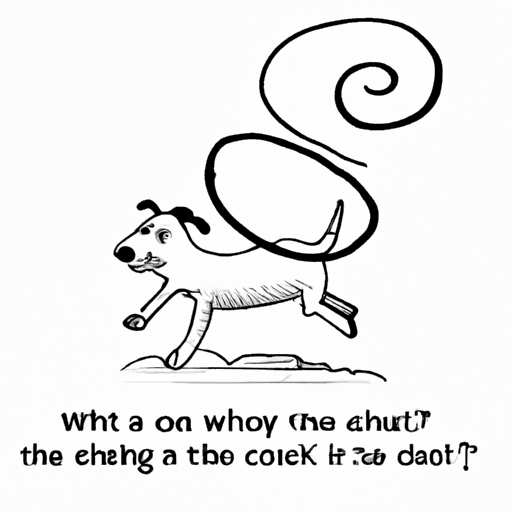Introduction
You’re a devoted pet parent, always striving to understand and care for your canine companion better. You’ve probably caught your dog doing something amusing and perplexing — chasing its tail in circles. It’s an image that’s often associated with dogs, a well-known trope in movies and cartoons, but have you ever wondered why dogs chase their tails in circles?
Decoding the Canine Behavior
Dogs engage in this behavior for various reasons. Let’s explore some of them:
- Puppy Play: Young puppies chase their tails as an exploratory game. It’s part of their learning process as they discover their bodies and capabilities.
- Exercise: Dogs need regular physical stimulation. Sometimes, when they don’t get enough exercise, they resort to chasing their tails to burn off energy.
- Boredom: Dogs are intelligent creatures that require mental stimulation. Tail-chasing can be a sign of boredom, especially in dogs left alone for long periods.
When Tail-Chasing Could Signal a Problem
While occasional tail-chasing is normal and harmless, excessive tail-chasing might be a red flag. Here’s when you should be concerned and consult a vet:
- Obsessive Compulsive Disorder (OCD): Dogs can develop OCD, just like humans. Excessive tail chasing can be a sign of this disorder.
- Medical Issues: If your dog excessively chases and bites its tail, it might be experiencing discomfort or pain due to allergies, parasites, or anal gland issues.
Tips to Curb Excessive Tail-Chasing
As a caregiver, it’s crucial that you help your dog manage this behavior if it becomes problematic. Here are some tips:
- Increase Exercise: Regular walks and play sessions can help keep your dog physically and mentally stimulated.
- Training: Train your dog to respond to commands like “stop” or “leave it”. This can prove useful when they start chasing their tail.
- Professional Help: If the tail-chasing continues despite your efforts, consider seeking help from a professional dog behaviorist.
| Tips to Curb Excessive Tail-Chasing | |
|---|---|
| 1 | Increase Exercise |
| 2 | Training |
| 3 | Professional Help |
Frequently Asked Questions
1. Is tail-chasing harmful to dogs?
No, it’s usually a harmless behavior unless it becomes obsessive or is caused by a medical issue.
2. Should I stop my dog from chasing its tail?
If your dog is chasing its tail occasionally out of playfulness or excitement, it’s fine. But if it’s excessive, you should try to curb it.
3. When should I consult a vet?
If your dog is chasing its tail excessively, seems distressed, or if the tail area is damaged, it’s time to consult a vet.
Understanding why dogs chase their tails can help you ensure the well-being of your furry friend. As a caregiver, your role is vital in recognizing and addressing any potential issues. Just remember, every wag, bark, and yes, even tail chase, is a part of the joy and challenge of caring for your canine companion.



